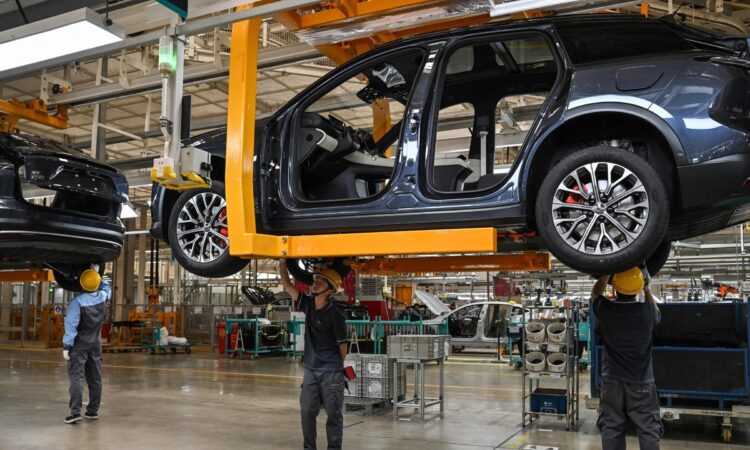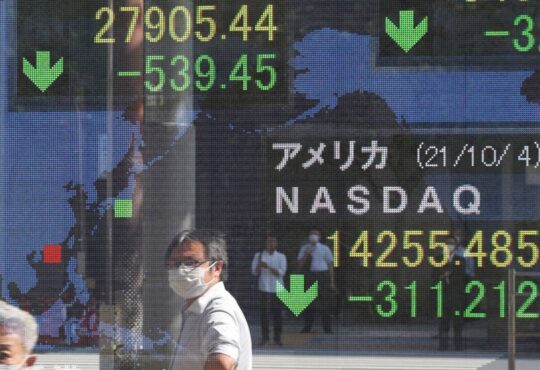
Key points
- Nio is a leading producer of electric vehicles in China.
- Since its 2018 initial public offering, Nio’s stock has been extremely volatile.
- Nio has reported impressive sales growth, but that growth has slowed in recent quarters.
Intro
Nio (NIO) is China’s leading battery electric vehicle producer and seller. Nio’s stock price has been extremely volatile in recent years as speculators wager on which companies will come out on top as the global auto market transitions to an electric future.
The EV maker suffered its worst year as a public company in 2022, when the stock tumbled 69.22% during a broad market sell-off. Year to date, Nio’s stock prices are still in the red in 2023, in part because of the company’s need for cash. The company, while promising in the EV landscape, still needs to generate free cash flow.
Nio’s stock has yet to make a new all-time high since January 2021, and the company’s impressive sales growth has slowed in recent quarters.
Unfortunately, Nio and other Chinese EV startups have struggled with profitability amid a pricing war as they battle with Tesla and one another for customers in the world’s largest EV market.
The key to Nio’s success may be its ability to successfully cut prices, burn more cash and dial back investments to stimulate sales growth while simultaneously managing liquidity risks.
Nio at a glance
Nio was founded in 2014 in Shanghai and quickly became one of the leaders of a group of Chinese EV startups seeking to become the next Tesla. The local media initially touted Nio as “China’s Tesla killer,” but the company struggled to live up to the hype. Nio unveiled the NIO EP9 electric supercar, its first vehicle model, in November 2016. It launched its first production car, the ES8 SUV, in December 2017.
From 2017 to 2019, Nio sold fewer than 32,000 vehicles while generating a net loss of $3.67 billion. The company completed an initial public offering to list in the U.S. on the New York Stock Exchange in September 2018. Nio raised $1 billion by pricing its IPO shares at $6.26 each. Unfortunately, the high-growth China EV market experienced an unexpected bump in the road in 2019, with EV sales declining by 4% compared to 2018.
Some analysts said Nio was within weeks of failure in 2019 before the company secured a financing package from the government of Hefei in April 2020.
In 2020 and 2021, Nio reported annual revenue growth exceeding 100% in each of those years. Unfortunately, that revenue growth dropped to just 36.3% in 2022, and Nio recently reported a 14.8% year-over-year revenue decline in the second quarter of 2023.
Nio stock price
Following Nio’s 2018 IPO at $6.26 per share, investors quickly seemed to realize how difficult the company’s financial path would be. As losses mounted, a trade war between the U.S. and China, a battery recall, and a downturn in the Chinese EV market drove Nio’s share price to an all-time low of $1.19 in October 2019.
Fortunately, delivery growth ramped up in the second half of 2020, and a speculative trading frenzy among retail traders on Robinhood and Reddit helped drive the stock to an all-time high of $66.99 in January 2021.
When its market cap peaked at nearly $100 billion in early 2021, Nio’s price-to-sales ratio spiked above 30, a valuation that quickly proved to be unsustainable. As sales growth slowed, Nio’s stock price dropped to $7 in June 2023. After a five-year roller coaster ride for investors, Nio shares are trading for less than $10.
How has Nio stock performed?
Nio’s stock performance varies widely depending on the time frame you consider.
In 2020, Nio shares generated a staggering gain of more than 1,000%, outperforming stocks such as Tesla and Nvidia (NVDA), in the S&P 500 that year.
However, in the past three years, Nio has severely underperformed. The stock has generated a 55% loss compared to a 32% total return for the S&P 500. If you look at the past year, Nio’s underperformance has worsened. In the past 12 months, Nio investors have endured a disappointing 53% loss compared to a 14% total return for the S&P 500.
Opportunities and obstacles facing Nio
Nio has opportunities to outperform moving forward but also faces several potential stumbling blocks ahead.
The company has built a valuable brand as a premium EV maker in China, which could help the company maintain pricing leverage even in a competitive market. In addition, favorable demographic trends in China and high demand for EVs among younger Chinese consumers position Nio well to capture a sizable share of what will potentially be the world’s largest EV auto market.
But Nio’s expansion of more affordable models could threaten its premium brand and cannibalize sales of its higher-end models. Meanwhile, geopolitical tensions between the U.S. and China could weigh on U.S. investor appetite for Chinese stocks or lead to restrictions on institutional investment, similar to the downfall of U.S.-listed Russian stocks and exchange-traded funds following the Ukraine invasion in 2022.
Strengths
- Massive growth opportunities in the world’s second-largest economy.
- Battery technology advancements will help ease legacy auto owners’ concerns over EV driving ranges.
- Nio’s high-tech cars may particularly appeal to younger consumers, more interested in EVs than older buyers.
Weaknesses
- Geopolitical risks tied to trade wars between the U.S. and China.
- Pricing wars in China’s EV market are compressing margins.
- Nio has yet to demonstrate a profitable business model.
What can we expect from Nio in 2023?
Nio recently reported 19,329 vehicle deliveries in August 2023, up 81% from a year ago. The company has delivered 94,352 vehicles year to date, up 31.9% compared to the same period in 2022. Nio management has guided for between 45.3% and 50.1% year-over-year revenue growth in the third quarter, representing a significant rebound from the revenue decline the company reported in the second quarter.
Bank of America analyst Ming Hsun Lee said Nio has an impressive model pipeline and an opportunity for margin recovery ahead.
“We like Nio for its advantages in the premium smart EV segment, solid volume sales (backed) by continuous new model (launches) to help share gain, and focus on autonomous driving, powertrain and charging solution(s) to enhance user experience,” Lee said.
Bank of America has a “buy” rating and $15 price target for Nio stock.
Morningstar analyst Vincent Sun said Nio’s recent guidance that vehicle margins will improve to roughly 15% by the fourth quarter is encouraging.
“Despite the near-term margin pressure, we expect vehicle margin to record sequential recovery in the second half as economies of scale kick in and with the decline in battery cost(s),” Sun said.
Morningstar has a “buy” rating and $13.30 fair value estimate for Nio.
Among the 31 analysts covering Nio stock have a median price target of $12.78, suggesting double-digit upside over the next 12 months. However, investors should always conduct their own research before making important investment decisions.
What can we expect in the coming years?
Like all other EV startup stocks, investors will likely be focused on Nio’s ability to achieve profitability in the coming years.
Sun is bullish on Nio’s strong model cycle, but he said profitability may still be further away than optimistic investors hope.
“Our positive long-term profitability outlook in the vehicle segment leads to the first profitable year in 2026,” Sun said.
CFRA analyst Aaron Ho is cautious about Nio’s stock, given the uncertainty surrounding the competitive landscape and an end to government EV subsidies in China.
In fact, premium neighborhood electric vehicle makers, such as Tesla, BMW, XPeng and Nio, have already been giving generous price discounts since late 2022.
“We are concerned the price war will sustain and/or intensify for an extended period and further pressure Nio’s profitability,” Ho said.
He projects 58% revenue growth for Nio in 2024 but anticipates an earnings-per-share loss of $5.19 next year.
CFRA has a “hold” rating and $11 price target for Nio.
Frequently asked questions (FAQs)
The median 12-month price target among the Wall Street analysts covering Nio stock is $12.78, suggesting double-digit upside for the stock through September 2024.
Nio’s ability to reach that consensus target and continue higher in 2025 will largely depend on whether the company can meet or exceed market expectations on vehicle deliveries, revenue growth and profitability.
It’s difficult to predict long-term stock price movement given the range of factors involved, including the company’s fundamental performance, investor sentiment surrounding the stock and broad macroeconomic factors, such as interest rates and the overall economy’s health.
Nio has an impressive long-term growth trajectory. However, the company’s market capitalization would need to climb to roughly $500 billion for the stock’s U.S. share price to hit $300 under its current share structure.
Among 35 analysts polled, there are 24 analysts with “buy” or “outperform” ratings for Nio, nine analysts with “hold” ratings, and only two analysts with “sell” ratings. However, Wall Street analyst coverage is generally biased toward “buy” ratings, so investors should always research before buying any stock.





